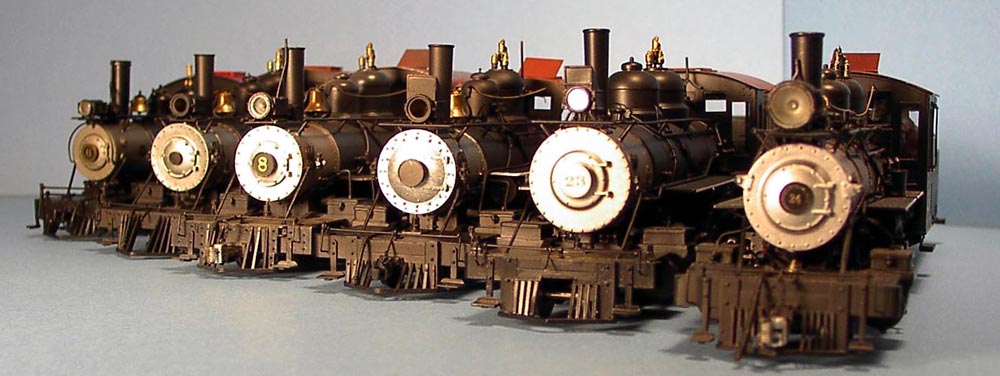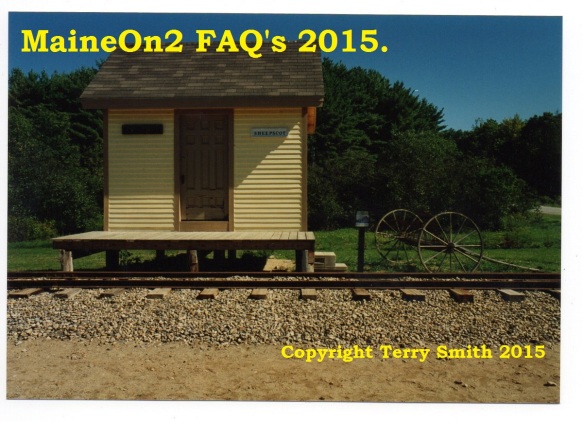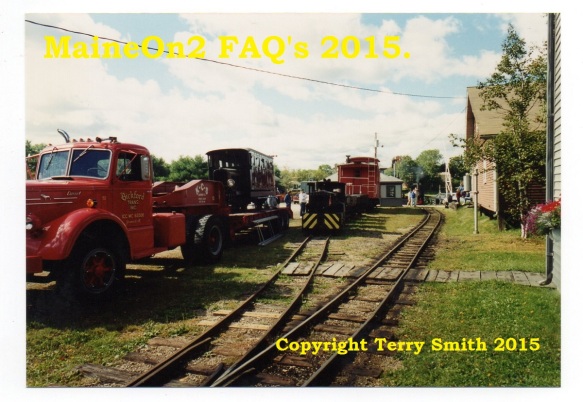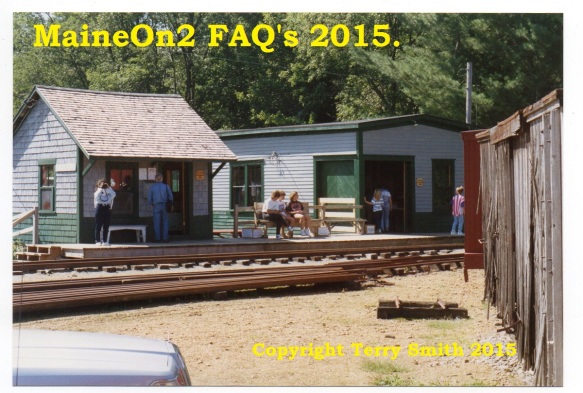Updated 01-03-2015: The subject of what colour to paint (or stain) our model buildings or structures is fraught with many difficulties, but to aid a current discussion thread on the Maine On2 Yahoo! group, I am publishing a few of my own colour photographs of what I would call “modern” examples of colour schemes.
Please note that these examples are not intended to be specific and accurate colour renditions of paint schemes used by the Maine Two Footers. My hope is that they may encourage blog readers and Yahoo! group members to share what paints they use for their models.
The original photographs were taken on film in the 1980’s and 1990’s during my then frequent travels to the USA. The same film (Kodachrome 200) was used in the same camera (auto exposure with override), and the pictures have all been scanned recently using the same scanner and software. Whilst the colours may be wrong, my assumption is that they will be consistently wrong.
This shot shows the Edaville depot and restaurant in the familiar 1980’s Edaville colour scheme, which is believed to be similar to the old Boston and Maine colour scheme.
This picture was taken at the Wiscasset Museum sometime in the 1990’s, and shows the re-built and re-painted Sheepscot Station. I believe that the structure now sports a different colour scheme. It is open to debate and confirmation as to whether this was an attempt at the original W&Q colour scheme. Chris McChesney has commented;- I would say that the “Buff and Brown” scheme might have been based on the common conception in the 1970s and 80s, but this has not been confirmed from actual paint samples from remaining W&Q or WW&F structures.
The next series of pictures were taken at the Boothbay Museum in one of the summers in the mid 1990’s when the various rail busses and rail cars visited. The Boothbay structures were painted in a two tone green scheme, somewhat reminiscent of the Grey (Gray) and Dark Green Maine Central “Pond Bottom” colour scheme applied to both the SR&RL and B&SR when these Two Footers were controlled by the MeC. The Wiscasset line also applied a similar two toned scheme using Light Green and Dark Green. Chris McChesney writes;- The Dark Green on the WW&F was a little lighter than the Dark Green on the MEC/SR&RL/B&SR. The MEC Dark Green was actually pretty dark and there are several original structures in original Dark Green to prove this.
Shows the Boothbay structure colour scheme in the shade – and an over-heating rail bus!
Shows the Boothbay structure colour scheme in bright daylight (in the distance)
These two shots show the Sandy River Museum and their structure colour scheme, again on a summers’ day in the 1990’s. Presumably, this is another attempt at the Maine Central “Pond Bottom” colour scheme.
The following two pictures were taken at the Conway Scenic Railway at North Conway, NH – a favourite journey break place for me in my travels, initially for the model shop that used to be in the block of shops to the right of the first picture and later to indulge in a treat of Ben and Jerry’s ice cream, ideally sat on their patio overlooking the yard – close to my idea of heaven – watching trains and eating Ben and Jerry’s outdoors in the sunshine!
This picture has been included because it shows three different appearances of colour schemes, note the differences between the crossing shanty, the freight shed in the distance behind it and the loco shed to the left. Sort of confirms the opening comment of how difficult it is to describe colours and colour schemes………more anon…….stay tuned!
Discussions are welcomed on any subject to do with this posting, apart from the spelling of colour.











You must be logged in to post a comment.